At the NATO summit, the member nations reiterated their commitment that each would spend at least two percent of GDP on defense by 2024. President Trump has repeatedly criticized the vast majority of NATO members that have not yet reached this target, complaining that, as a result, the U.S. pays an unfair share of NATO’s costs.
The new rift in the alliance over defense spending raises an interesting question: Exactly how big a deal would it be if all NATO members immediately increased their defense spending to the target of two percent of GDP? We ran the numbers, supposing that every NATO nation that spends below the 2024 target had spent at least two percent of GDP on defense in 2017.
How does U.S. defense spending compare to that of other NATO members?
In 2017, the U.S. defense budget of $686 billion equaled 3.6 percent of GDP, by far the largest of any NATO member. The combined defense budgets of all other NATO members totaled $271 billion in 2017. Because most NATO members are small countries, only ten members spent more than $10 billion. In rank order, these are: U.S., U.K., France, Germany, Italy, Canada, Turkey, Spain, Poland and (just barely) Netherlands. But simply comparing our $686 billion to other NATO members’ $271 billion is misleading, because we have treaty obligations in the Pacific and other security needs that literally span the globe. Most NATO members do not.
If all NATO members met the two percent target, which countries’ defense spending would increase the most?
This change would have little or no effect on seven countries because they already are near or above the target: In 2017, the defense budgets of the U.K., Greece, and Estonia—like the U.S.—exceeded 2 percent of GDP. France, Romania, Lithuania, and Latvia all were close—less than 0.3 percent under the two percent target.
To meet the 2 percent target, only four would increase their spending by $10 billion or more: Germany, Italy, Canada and Spain. Read those last countries’ names again. Three were run by fascist dictatorships in WWII. When NATO was formed, these nations were not on the list of the countries that the U.S. most wanted to have a large military establishment.
In any case, if all NATO members had spent two percent of GDP on defense in 2017, the total increase in defense spending would have been $114 billion, two-thirds of which is accounted for by the three ex-fascist nations.
Would extra defense spending by European NATO countries save the U.S. money, and if so, how much?
Suppose for the sake of illustration that the entire $114 billion in additional European spending had been matched by an equal reduction in the U.S. defense budget (a big “if”). If this had occurred, then U.S. defense spending in 2017 would have been $572 billion instead of $686 billion, or a 16.6 percent reduction from the actual defense budget. This amount would have left the U.S. defense budget at 3.0 percent of GDP, still by far the largest in NATO.
How much would U.S. defense savings reduce total federal spending?
The U.S. never passed a budget in FY 2017, but total federal spending that year came to $4 trillion. Had the hypothetical defense cut from contributions of other NATO members actually been made, total spending would have been reduced to $3.9 trillion, or just 3 percent.
How would the cut in defense spending impact the federal deficit?
Current CBO projections are that the budget deficit will exceed $800 billion this year, will fall just short of $1 trillion in FY 2018, and will exceed $1 trillion starting in 2020 and continuing indefinitely. The hypothetical cut in defense spending would account for 12 percent of the deficit this year and then would steadily fall thereafter because the deficit grows faster than projected defense spending.
What if NATO countries increased their defense spending target to four percent?
According to reports from the White House, at the NATO summit President Trump doubled down on his criticism of defense spending among NATO members by proposing that the target for defense spending be increased to four percent of GDP. Had the 2017 budgets for all NATO members met this target, U.S. defense spending would have been $762 billion (an increase of $76 billion), all other NATO members would have spent $735 billion (an increase of $464 billion), and total defense spending for all of NATO would have been $1.5 trillion (an increase of $540 billion). The President did not indicate how this money would have been spent or why such a massive 50 percent increase in defense spending is needed.
Data on defense spending from NATO via Forbes. Robert Litan is a Nonresident Senior Fellow in the Economic Studies program at Brookings and Roger Noll is Professor of Economics, Emeritus, at Stanford University. The authors did not receive any financial support from any firm or person for this article or from any firm or person with a financial or political interest in this article. They are currently not an officer, director, or board member of any organization with an interest in this article.
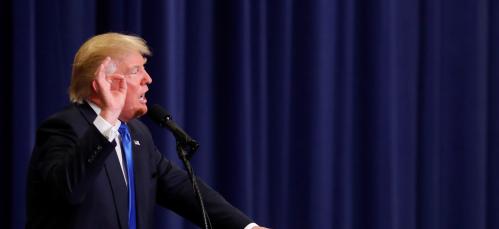

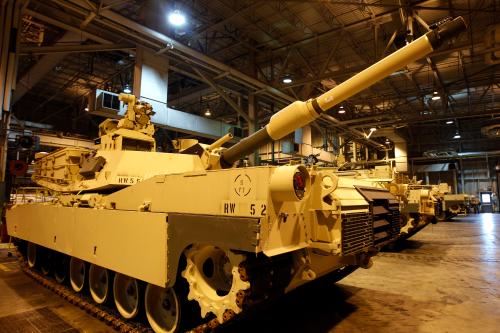
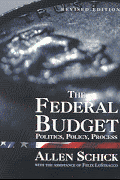




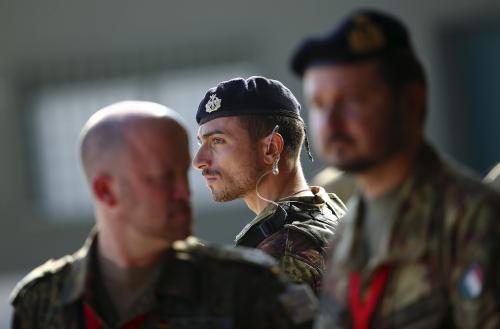
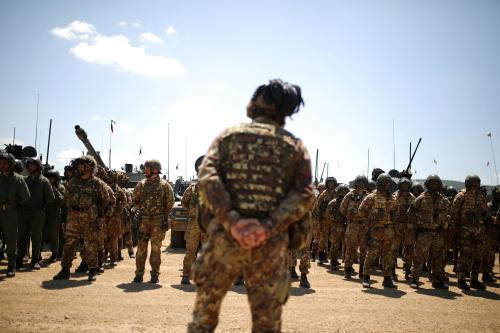

Commentary
As Trump twists NATO’s arm, let’s run the math on defense spending
July 12, 2018